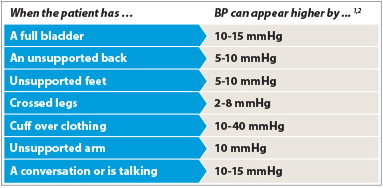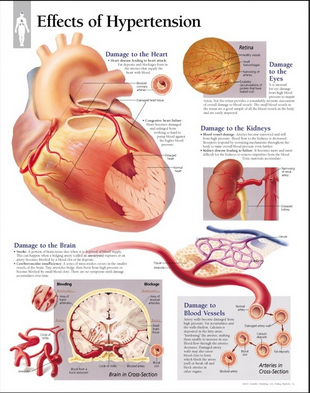Introduction
The force that the heart exerts on the body’s arteries when pumping blood determines an individual’s systolic blood pressure. On the other hand, diastolic pressure is recorded when the heart relaxes. In a case where the general practitioner records the figures such as 115/85, the upper number indicates an individual’s systolic pressure while the lower one denotes his or her diastolic pressure.
Using the example of Mr. Joe, this study presents the fundamental physiological mechanisms that help in regulating one’s blood pressure, including a detailed discussion of why accuracy is crucial when recording blood pressure levels. It will also confirm that indeed Mr. Joe’s elevated blood pressure has the potential of causing stroke and even death if left unchecked. Hence, the general practitioner may recommend several measures such as the need for a thorough exercise and proper diet in addition to regular prescriptions to lower the patient’s blood pressure.
Physiological Processes
A healthy human body is designed in a manner that allows it to automatically maintain the required blood pressure and flow levels (Khan Academy 2018). In other words, it has a mechanism that detects pressure levels in blood vessels. This information is relayed to the heart and kidneys among other components such as veins that adjust their operations to decrease or raise the respective person’s blood pressure. The entire pressure regulation process may involve varying the capacity of blood that the heart directs to arteries or changing the level of blood in one’s veins. The body may also respond by altering the general blood volume. For instance, to raise pressure levels, the rate of heart pumping or contraction may go up to allow more blood to be distributed to the respective arteries and systems.
In addition, veins help to raise or lower the blood pressure by increasing or decreasing their diameters. For instance, when they inflate, they hold a larger volume of blood, thereby barring the amount that goes back to the heart for distribution to an individual’s arteries. In this case, since the volume it releases is low, blood pressure also goes down. Consequently, when they deflate, they hold a smaller volume to the extent that more blood finds its way to the heart for pumping, a situation that raises pressure in the arteries.
Kidneys also play a key role in regulating blood pressure in the body. It is crucial to point out that these body organs help to eliminate unnecessary fluids such as urine from the blood. In other words, when kidneys take high volumes of urine from the blood, arteries and veins are left with a lower blood capacity flowing through them, implying a reduction in the underlying blood pressure. However, since the elimination of urine from the blood takes time, it is necessary to point out kidneys’ blood pressure regulation is not as effective as the other discussed mechanisms.
As an illustration, a person may bleed excessively after being involved in an accident. Such a situation lowers his or her blood pressure. To restore the pressure to the required levels, the body may react by raising the speed of heart pumping. In this case, the heart contracts at a higher rate to distribute more blood to all vessels. In addition, the diameter of veins reduces to allow more blood to the heart for distribution. Moreover, the amount of blood to the kidneys goes down to lower the rate of urine formation, consequently retaining most of the blood in the vessels to maintain the pressure high. Such responses take place based on an individual’s blood pressure requirements in the body.
Blood Pressure
Accurate Blood Pressure Measurement
According to NICE (2011), accurate blood pressure figures help to get the correct number of obese people in a country, hence facilitating the establishment of the correct measures, including the manufacturing of adequate anti-hypertension prescriptions (NICE 2011). For instance, in case inaccurate figures are recorded following an erroneous additional 5 mm Hg, a huge number of people wrongly identified as obese may be subjected to medication, a situation that may ultimately interfere with their health.
In addition, a country will end up spending excess funds handling such cases. In other words, accurate blood pressure records not only ensure that only hypertensive patients are treated but also pave the way for countries to allocate the appropriate amount of finances to address obesity or hypertension cases.
Very few patients question the accuracy of blood pressure figures presented to them. In addition, nurses do not take time to prepare patients in a manner that they (patients) can facilitate the achievement of accurate blood pressure results (NICE 2011). Figure 1 below shows various areas that nurses can check with patients when assessing their blood pressure to get accurate results.

Incorrect diagnosis may lead to the prescription of the wrong drugs, a situation that subjects patients to undesirable health complications such as stroke (Abete et al. 2018). From the above information, nurses who end up recording inaccurate blood pressure figures expose the concerned patients who they classify as hypertensive to unnecessary pills that are counterproductive to their health. Such misdiagnosed patients may suffer mental complications and extra expenses, which could have been avoided if the respective general practitioners were keen to take the right blood pressure readings.
Impact of Mr. Joe’s Blood Pressure on His Health
Any patient whose systolic blood pressure figure reads above 120 is considered at risk of experiencing hypertension. Specifically, a systolic figure above 130 indicates that a patient has high blood pressure. Mr. Joe has a systolic figure of 160, meaning that he is already obese as the general practitioner observes. Although the patient engages in regular exercise, his continued consumption of fatty foods seems to have contributed significantly to the elevated blood pressure. Figure 2 below shows the impact of high blood pressure on a person’s health.

Abete et al. (2018) assert that patients with high blood pressure may experience stroke following an insufficient blood supply to their brains. Such a situation occurs when vessels that take blood to the brain are gradually weakened following the constant elevated pressure. Moreover, it is crucial to point out that Mr. Joe may suffer from heart failure, especially when it (heart) is exhausted after an extensive period of forceful pumping of blood.
According to Balije et al. (2016), high blood pressure levels have led to the death of many patients. In other words, Mr. Joe risks succumbing if he fails to eliminate the fatty foods he takes on a regular basis. In addition, since kidneys contribute to the regulation of blood pressure, Mr. Joe may experience kidney breakdown since proper functioning of this organ goes hand in hand with healthy blood vessels within or outside this body component.
The General Practitioner’s Recommendations
Once the doctor takes the reading, which depicts Mr. Joe as hypertensive, he or she may recommend various measures, including the need to redo the blood pressure measurement to confirm that the figures are indeed accurate. After ascertaining the accuracy of the readings, the health practitioner may recommend a change of diet for Mr. Joe. For instance, the doctor may propose the need for including more fruits and vegetables in the patient’s diet (British and Irish Hypertension Society 2018).
He or she may advise Mr. Joe to consume plenty of whole-grain diets, including fish and nuts. If the medical officer realises that Mr. Joe’s driving job is stressful to him, he may recommend a leave for him to concentrate on exercising, regular medication, and checking his daily diet. When properly implemented, such recommendations will facilitate the patient’s healing process.
Conclusion
The human heart plays a central role of ensuring that blood is pumped to all body parts to facilitate their operation. It achieves this goal by beating consistently to press and push blood to the intended destinations through various blood vessels. The need for taking accurate blood pressure figures has also been presented as vital in ensuring that patients who are given anti-hypertension prescriptions are indeed obese.
Inaccurate figures not only lead to health complications but also the allocation of excessive and unnecessary funds to manage cases of hypertension. Mr. Joe’s high blood pressure may subject him to health issues such as stroke, heart and kidney failure, and even death if it remains unchecked. However, the general practitioner can recommend the appropriate diet that is free of fats or sugars and thorough exercise to deal with the effects of high blood pressure.
Reference List
Abete, I, Zulet, M, Goyenechea, E, Blazquez, V, de Arce Borda, A, Lopez de Munain, A & Martinez, J 2018, ‘Association of lifestyle, inflammatory factors, and dietary patterns with the risk of suffering a stroke: a case-control study’, Nutritional Neuroscience, vol. 21, no. 1, pp. 70-78.
Balije, S, Kumar, A, Bhawani, G, Murthy, K & Kumari, N 2016, ‘Effect of hypertension at presentation on prognosis in patients with dilated cardiomyopathy presenting with normal renal angiogram’, Indian Journal of Medical Research, vol. 144, no. 2, pp. 281-287.
British and Irish Hypertension Society 2018, Annual scientific meeting. Web.
Khan Academy 2018, online video, what is blood pressure, California. Web.
NICE 2011, Hypertension in adults: diagnosis and management. Web.
Writer, S 2014, ‘How to get the most accurate blood pressure measurement’, AMA Wire. Web.